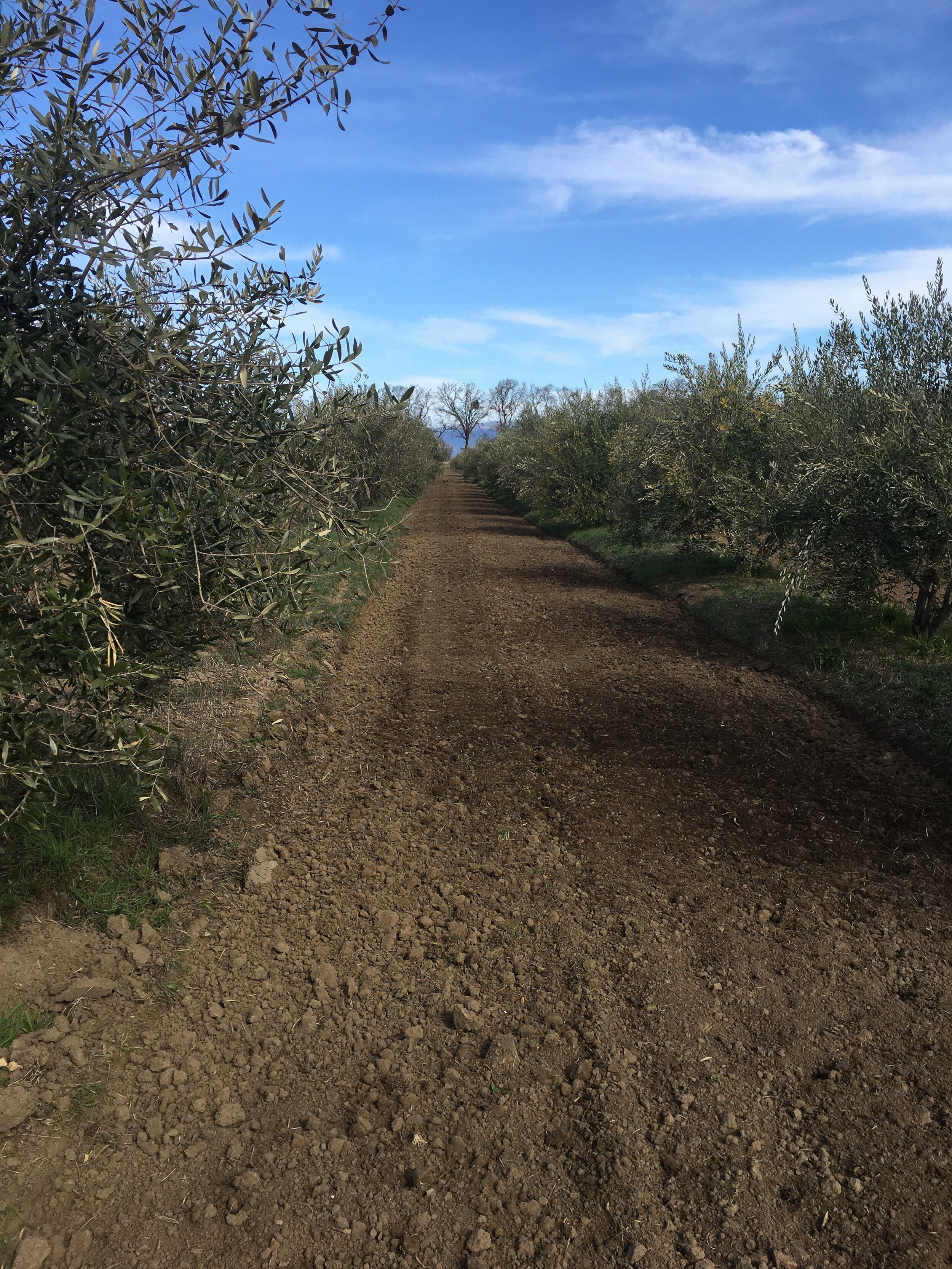We are grateful for the fact that we can spend our time in the open spaces of our farm while staying home. We hope you and yours are well and finding all sorts of ways to stay busy and in good spirits while staying home.
We Took Gold!
We had great news in February. Our 2019 harvest oil won a gold medal at the 2020 Los Angeles International Extra Virgin Olive Oil Festival. We have a mix of olives which bring different flavor profiles to our oil: Leccino and Maurino have a more delicate flavor; Frantoio and Moraiolo are more robust with higher polyphenol levels. With our blend of various Tuscan varieties we usually produce a medium robust oil. The taste of olive oil also depends on the maturity of olives at harvest and the care with which they are handled right after harvest, and of course the expertise of our miller, Emilio De La Cruz at Chacewater Olive Mill. The mill is but ten minutes from our farm, so we can mill when the olives are still fresh from the trees.
We find it to be a great finishing oil for salads and vegetables with its pungent and fruity flavor, but it can be used to sauté vegetables as well. And we are now finding how great EVOO is for baking. See below for the results and a recipe.
Springtime at the Farm
The weather has been in a good rhythm this spring with warm sunny days alternating with showers, giving us days to work in the orchard and days to let the ground soak up moisture for the big growing season ahead. We will be planting another 100 trees in the new orchard and we are busy preparing by assembling gopher baskets, weed whacking the berms and marking spots for the new trees.
New Folks on the Block
We would like to welcome our new next door neighbors, Tammy and Mark Lipps to the Soda Bay Road community. Tammy has moved her SoCal catering business to Lake County at the former Dancing Poly Farm. They will soon be delivering freshly prepared gourmet dinners throughout Lake County, making our stay-at-home lives that much more enjoyable. Tammy can be reached through her website, http://www.theripechoice.net.
Healthy Cooking with Extra Virgin Olive Oil
At Campodonico Olive Farm, we have been experimenting with recipes using olive oil and produced a cake worthy of its ingredients:
Almond Cake
(Mark Bittman and Sam Sifton)
Yield 8 servings
Time 2 hours 15 minutes
Ingredients
1 medium orange
1 lemon
6 ounces raw almonds
1 cup all-purpose flour
1 tablespoon baking powder
4 eggs
½ teaspoon salt
1 ½ cups sugar
2/3 cup mild-flavored extra virgin olive oil
Confectioners’ sugar
Preparation
Step 1
Place the orange and the lemon in a saucepan, and cover with water. Bring to a boil over medium-high heat, then reduce the heat and simmer for 30 minutes. Drain and cool.
Step 2
Heat the oven to 325 degrees, and set a rack in the middle position. Bake the almonds 10 to 15 minutes. Set aside to cool completely. When the almonds are cool, pulse them in a food processor until finely ground.
Step 3
Set oven to 350 degrees. Grease and flour a 9-inch springform pan. Almond flour can be used here.
Step 4
When the citrus is cool, cut the lemon in half, and discard the pulp and seeds. Cut the orange in half, and discard the seeds only. Put the citrus fruit in the food processor and process until almost a paste.
Step 5
In a small bowl, whisk the flour and baking powder. Combine eggs and salt in a mixer bowl. Beat until foamy. Beat in sugar. Fold in the flour mixture. Add the citrus, ground almonds and olive oil, and beat on low speed until well incorporated. Pour the batter into the pan, and bake for 50 to 60 minutes, until golden brown and cake springs back quickly when pressed with your finger. Let cool on a rack for 20 minutes, then unmold from the pan and dust with confectioners’ sugar.




































